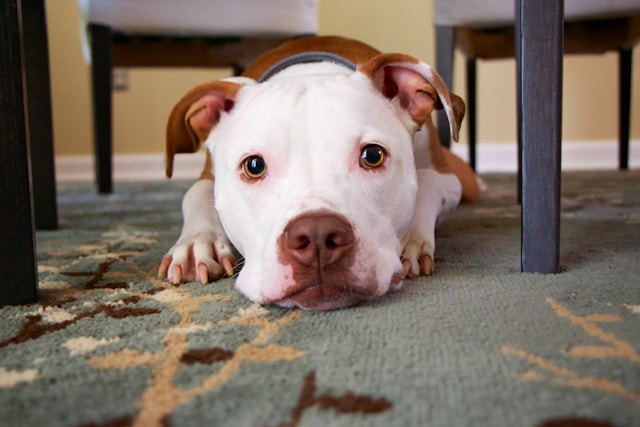
Senior Pet Care: How to Support an Aging Cat or Dog?
Just like humans, pets experience changes as they age. Whether you have a gray-muzzled dog or a slow-moving senior cat, they require extra care, attention, and love to ensure they stay comfortable and happy in their golden years.
Senior pets may move slower, sleep more, and require dietary or medical adjustments, but they are just as lovable and deserving of quality care. In this guide, we’ll explore how to support your aging cat or dog, ensuring they live their later years with comfort and dignity.
1. Understanding When Your Pet Becomes a Senior
The age at which a pet is considered “senior” varies by species and breed:
???? Dogs:
- Small breeds (Chihuahuas, Dachshunds) – Around 10-12 years
- Medium breeds (Beagles, Cocker Spaniels) – Around 8-10 years
- Large breeds (Labradors, Golden Retrievers) – Around 7-9 years
- Giant breeds (Great Danes, Mastiffs) – Around 5-7 years
???? Cats:
- Considered senior around 10-12 years
- Geriatric stage begins at 15+ years
Each pet ages differently, but common signs of aging include reduced energy, joint stiffness, vision/hearing loss, and changes in appetite or behavior.
2. Nutrition: Adjusting to Their Aging Needs
As pets age, their metabolism slows down, and they may require a different diet to maintain a healthy weight and support aging organs.
✔ For Senior Dogs:
- Choose senior-formulated dog food with joint-supporting ingredients like glucosamine & chondroitin.
- Opt for high-quality protein to maintain muscle mass while avoiding excessive calories.
- Include omega-3 fatty acids to support brain function and reduce inflammation.
✔ For Senior Cats:
- Pick easily digestible, protein-rich senior cat food to maintain lean muscle.
- Ensure proper hydration—wet food can help, as older cats are prone to kidney disease.
- Add DHA & EPA (omega-3s) to support joint health and cognitive function.
✅ Tip: Regular vet check-ups can help adjust your pet’s diet based on their individual health needs.
3. Managing Joint Pain & Mobility Issues
Arthritis and joint pain are common in senior pets, making movement difficult. Watch for signs of discomfort, like reluctance to jump, stiffness after sleeping, or slow movement.
✔ How to Help:
- Provide orthopedic pet beds for joint support.
- Use ramps or stairs to help pets reach their favorite spots.
- Consider joint supplements (glucosamine, chondroitin, MSM).
- Moderate, low-impact exercise like gentle walks for dogs or interactive play for cats.
4. Vet Care: More Frequent Check-Ups
As pets age, they are more prone to:
???? Arthritis
???? Kidney or liver disease
???? Vision and hearing loss
???? Cognitive dysfunction (pet dementia)
???? Cancer and tumors
Senior pets should visit the vet at least twice a year for early detection of health issues. Regular blood tests, dental exams, and screenings help ensure they stay healthy longer.
5. Mental Stimulation: Keeping Their Mind Sharp
Senior pets may slow down, but they still need mental stimulation to prevent cognitive decline.
✔ For Senior Dogs:
- Puzzle toys & slow feeders
- Short training sessions (new tricks, scent games)
- Social interaction (short walks, dog-friendly outings)
✔ For Senior Cats:
- Interactive toys & food puzzles
- Scratching posts & cat trees (with easy access)
- Gentle play with feathers or slow-moving laser pointers
Tip: A mentally stimulated pet stays happier and healthier longer!
6. Supporting Vision & Hearing Loss
It’s common for senior pets to develop cataracts or hearing loss. Signs include:
???? Not responding to commands
???? Bumping into furniture
???? Being startled easily
✔ How to Help:
- For blind pets: Keep furniture in the same place & use scent markers.
- For deaf pets: Use hand signals or vibration cues to communicate.
- For both: Avoid startling them—approach gently and from the front.
7. Adapting Their Environment for Comfort
Your senior pet might not move as easily as before, so making small adjustments at home can help:
???? For Dogs & Cats:
- Non-slip rugs to prevent slipping on hard floors.
- Easy-access litter boxes for senior cats (low-sided).
- Warm, cozy bedding in quiet areas.
- Avoid stairs when possible or add ramps.
Comfort is key to ensuring they stay happy and pain-free!
8. Senior Pet Grooming & Hygiene
Older pets may struggle with grooming and hygiene.
✔ Senior Dog Grooming:
- Brush regularly to reduce shedding & matting.
- Trim nails more often—they wear down less with reduced activity.
- Check ears, teeth, and skin for signs of infection.
✔ Senior Cat Grooming:
- Brush long-haired cats to prevent mats (they may groom less).
- Provide a heated bed to soothe stiff joints.
- Regularly check for dental issues, as older cats are prone to gum disease.
9. Preparing for End-of-Life Care
While no one wants to think about it, planning for a pet’s end-of-life stage ensures they stay comfortable and pain-free.
???? Signs It May Be Time for Hospice Care:
- Chronic pain that medication can’t relieve
- Difficulty walking or standing
- No longer eating or drinking
- Loss of interest in once-loved activities
✔ Providing Comfort:
- Offer gentle companionship—sit with them, pet them, and keep them comfortable.
- Work with your vet to manage pain and quality of life.
- Consider in-home pet hospice services for a peaceful transition.
